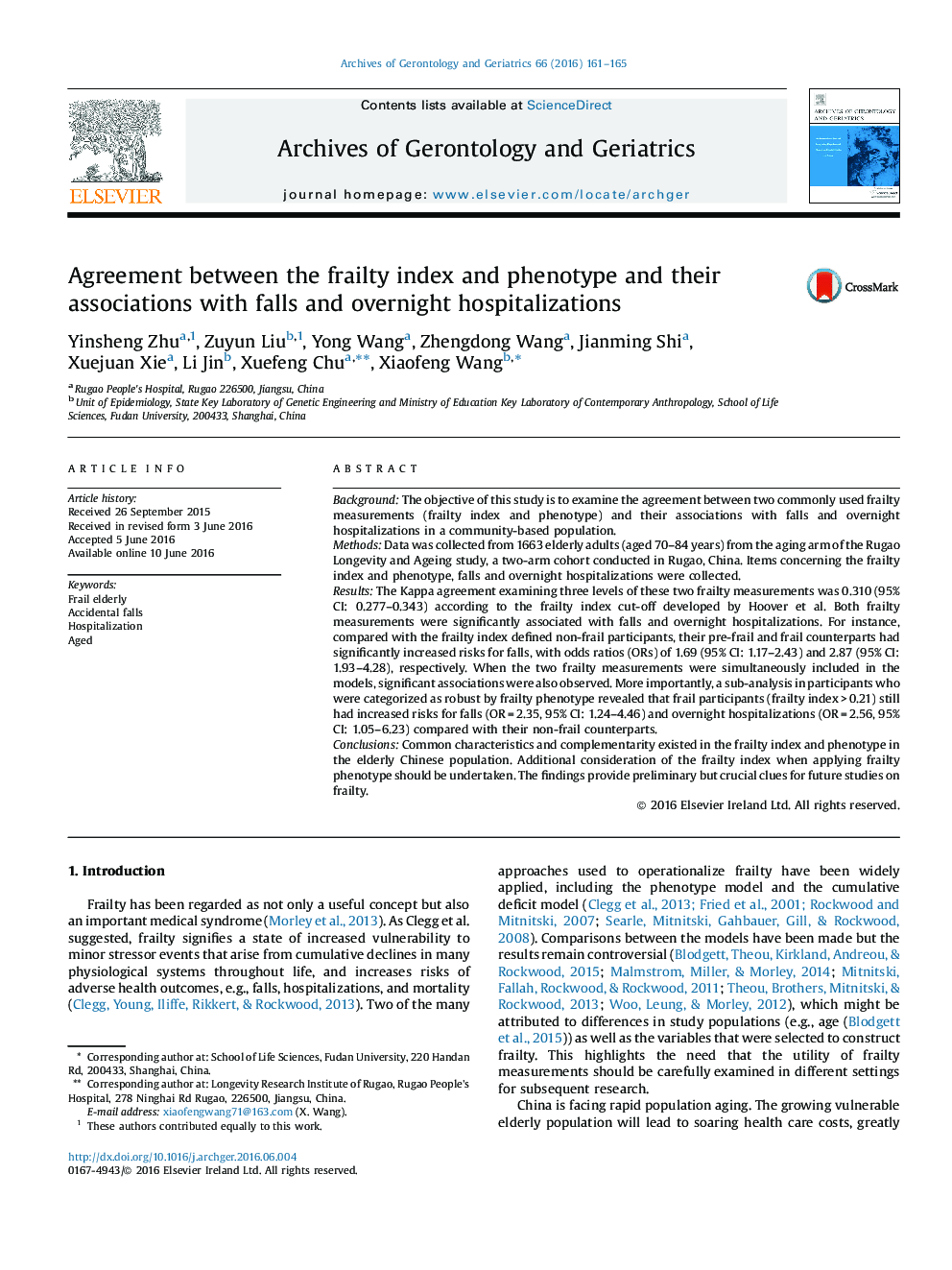| کد مقاله | کد نشریه | سال انتشار | مقاله انگلیسی | نسخه تمام متن |
|---|---|---|---|---|
| 1902654 | 1534423 | 2016 | 5 صفحه PDF | دانلود رایگان |
• The Kappa agreement examining three levels of two frailty measurements was 0.310.
• Both frailty measurements were associated with falls and overnight hospitalizations.
• A sub-analysis was performed in people categorized as “robust” by frailty phenotype.
• Sub-analysis revealed that frail participants had increased risks of falls and hospitalizations.
• FI can better identify frail elderly adults in the early stages of frailty in Rugao populations.
BackgroundThe objective of this study is to examine the agreement between two commonly used frailty measurements (frailty index and phenotype) and their associations with falls and overnight hospitalizations in a community-based population.MethodsData was collected from 1663 elderly adults (aged 70–84 years) from the aging arm of the Rugao Longevity and Ageing study, a two-arm cohort conducted in Rugao, China. Items concerning the frailty index and phenotype, falls and overnight hospitalizations were collected.ResultsThe Kappa agreement examining three levels of these two frailty measurements was 0.310 (95% CI: 0.277–0.343) according to the frailty index cut-off developed by Hoover et al. Both frailty measurements were significantly associated with falls and overnight hospitalizations. For instance, compared with the frailty index defined non-frail participants, their pre-frail and frail counterparts had significantly increased risks for falls, with odds ratios (ORs) of 1.69 (95% CI: 1.17–2.43) and 2.87 (95% CI: 1.93–4.28), respectively. When the two frailty measurements were simultaneously included in the models, significant associations were also observed. More importantly, a sub-analysis in participants who were categorized as robust by frailty phenotype revealed that frail participants (frailty index > 0.21) still had increased risks for falls (OR = 2.35, 95% CI: 1.24–4.46) and overnight hospitalizations (OR = 2.56, 95% CI: 1.05–6.23) compared with their non-frail counterparts.ConclusionsCommon characteristics and complementarity existed in the frailty index and phenotype in the elderly Chinese population. Additional consideration of the frailty index when applying frailty phenotype should be undertaken. The findings provide preliminary but crucial clues for future studies on frailty.
Journal: Archives of Gerontology and Geriatrics - Volume 66, September–October 2016, Pages 161–165
